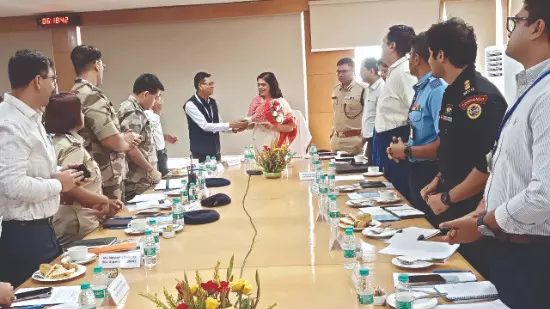Kolkata airport boosts safety against bird strikes, laser threats

Kolkata: A high-level meeting of the Aerodrome Environment Management Committee (AEMC) was held at Netaji Subhas Chandra Bose International (NSCBI) Airport, Kolkata, on Friday seeking to address the problem of bird strikes and laser light interference in flight zones.
The meeting was chaired by Nandini Chakraborty, principal secretary, Home department, and attended by senior IAS officers, representatives from the Airports Authority of India (AAI), municipalities and major airlines.
One of the major concerns discussed was the presence of garbage dumps around the airport, which contribute significantly to increased bird activity — a major cause of bird strikes.
Municipal representatives assured the committee that regular cleaning is being intensified, unauthorised fish and meat shops are being evicted and closed garbage vats are being installed to reduce open dumping. The principal secretary advised continuous vigilance in maintaining cleanliness in the airport vicinity.
The committee also discussed the recent decline in bird strike incidents, attributing the improvement to a scientific bird study commissioned by AAI. However, continued preventive action was strongly recommended.
Another issue discussed was addressing the problem of laser lights.
The principal secretary directed municipal authorities and police to strictly monitor and restrict laser activities in the critical flight zones. She called for strict enforcement of DGCA regulations and increase in public awareness.
Additional concerns included the removal of tall trees and obstacles, the cleaning of external drains to prevent waterlogging.
Airport director PR Beuria emphasised that NSCBI Airport, the fifth busiest in India, manages over 400 daily flight movements and is capable of handling Code-E wide-body aircraft.
He underscored that safety is paramount and collaborative efforts are essential to maintain a hazard-free airspace.



